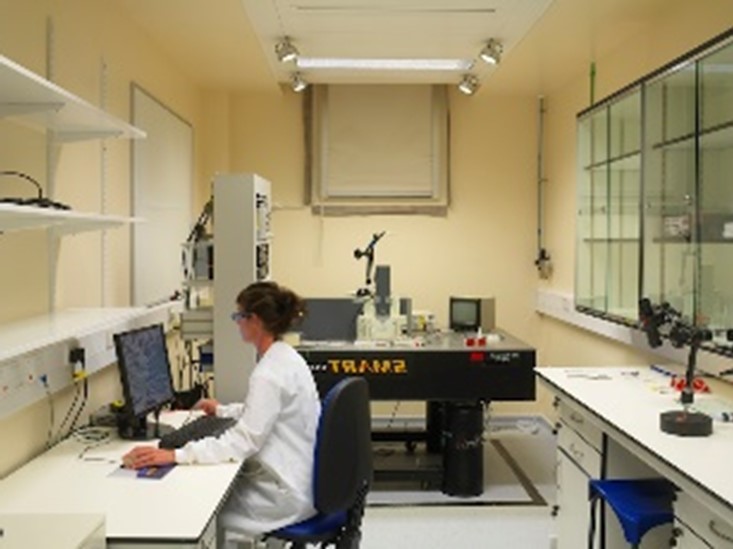Low Noise Labs (LNLs)
The Low Noise Labs (LNLs) are the fifteen workhorse labs in the basement of NSQI. Small, but perfectly formed, these labs contain various features designed to ensure that a researcher can pursue their work at the nanoscale and beyond, uninterrupted by vibrations from the environment around them. Below are listed some of its features.

Low vibration:
- Deep foundations: The basement level sits directly on the building foundations. There are 2 metres of concrete between you and the bedrock. The building is extremely stiff, allowing any vibration to pass through with as little dissipation as possible (the energy does not stay in the building). The close match in material properties between the concrete and the bedrock then means that there is little reflection of the energy back into the building.
- Isolation block: The main experimental area in the lab is the isolation block, the platform on which the optical table sits. It is a five tonne concrete block resting on damper pads in a pit cast into the concrete foundations of the building. The separation of experimental area from the rest of the floor prevents all but low vibrations entering the block (the damper pads have a vibration window of 2-7Hz).
- Sound-proof doors
- Anti-vibration fittings: All services are mounted on springs or rubber mounts. Any pipework that enters the lab goes through a flexible section before breaching the wall.
- Controlled services: Services (air con, water, air extract) can all be shut off outside the lab to further reduce any noise.
Low electrical noise:
- Faraday cages: The basement and individual labs are all faraday cages, with metal foil built into the walls and ceiling. For extra protection the foil edges are available to continue the cage across the window and door.
- DC task lighting: To avoid 50 Hz noise in photodetectors, the labs are fitted with separate DC lighting over the experimental area.
- Plastic service pipework: All pipework that enters the labs is plastic to avoid any antenna effects.
- Fibre-optic network: The data network runs over a fibre-optic system rather than Cat5e cables, to avoid introducing EM noise.
- Clean power: Labs are equipped with a clean power supply that is filtered by a 1:1 transformer outside each lab. There is also a dedicated earth for the basement.
Controlled environment:
- Air conditioning: An individual recirculating air conditioner in every lab.
- Services: Air extract, water, and process chilled water in each lab, with shut offs for each outside the lab.


